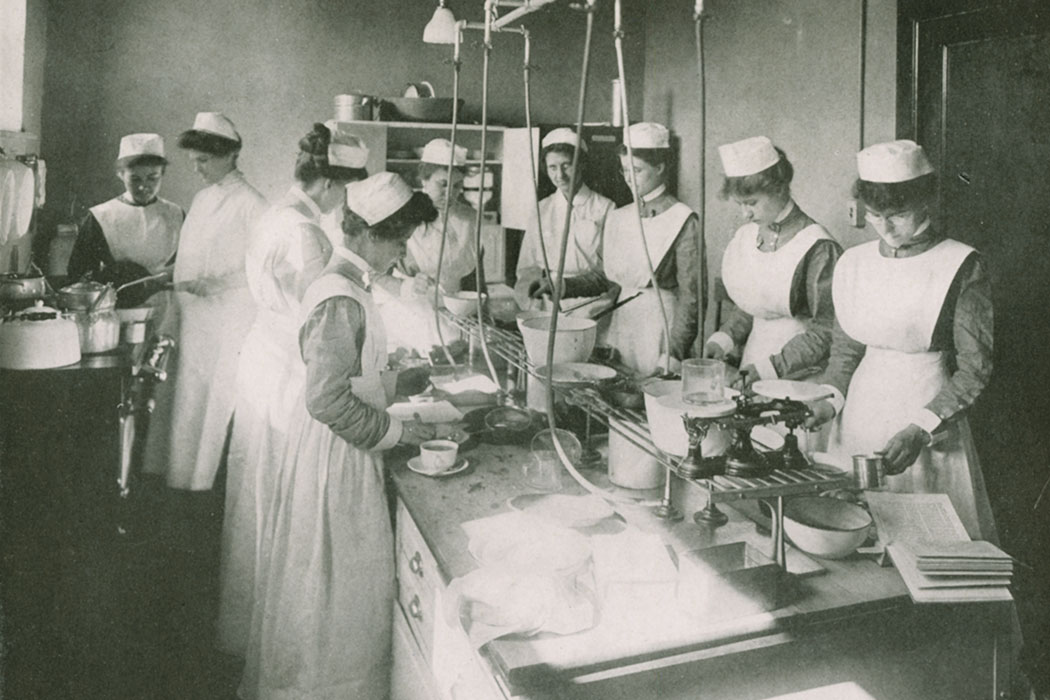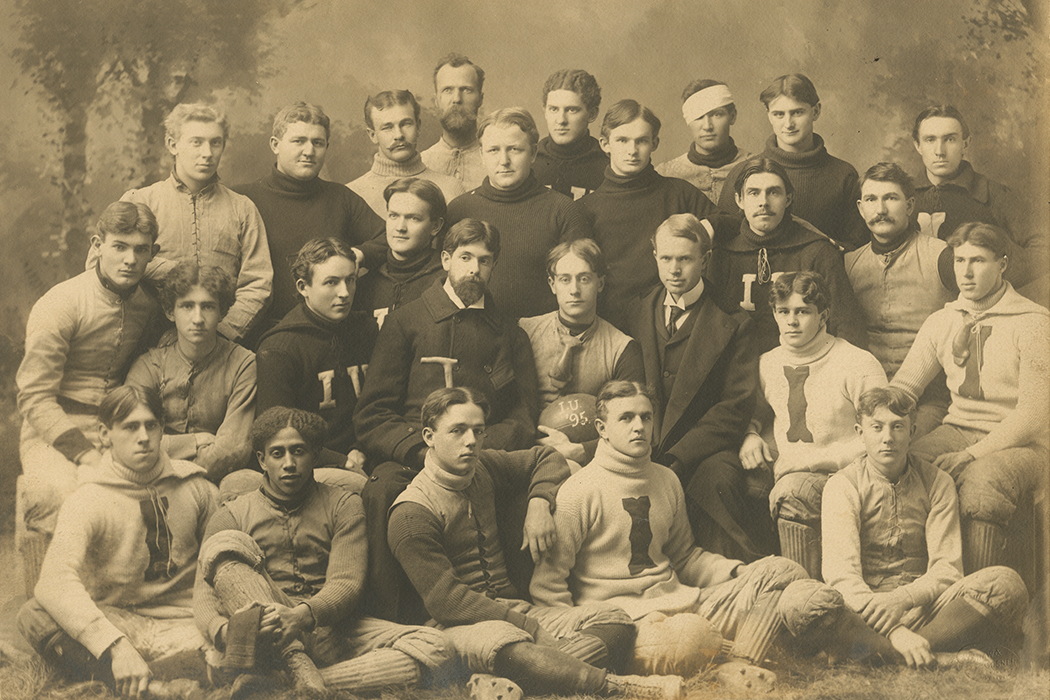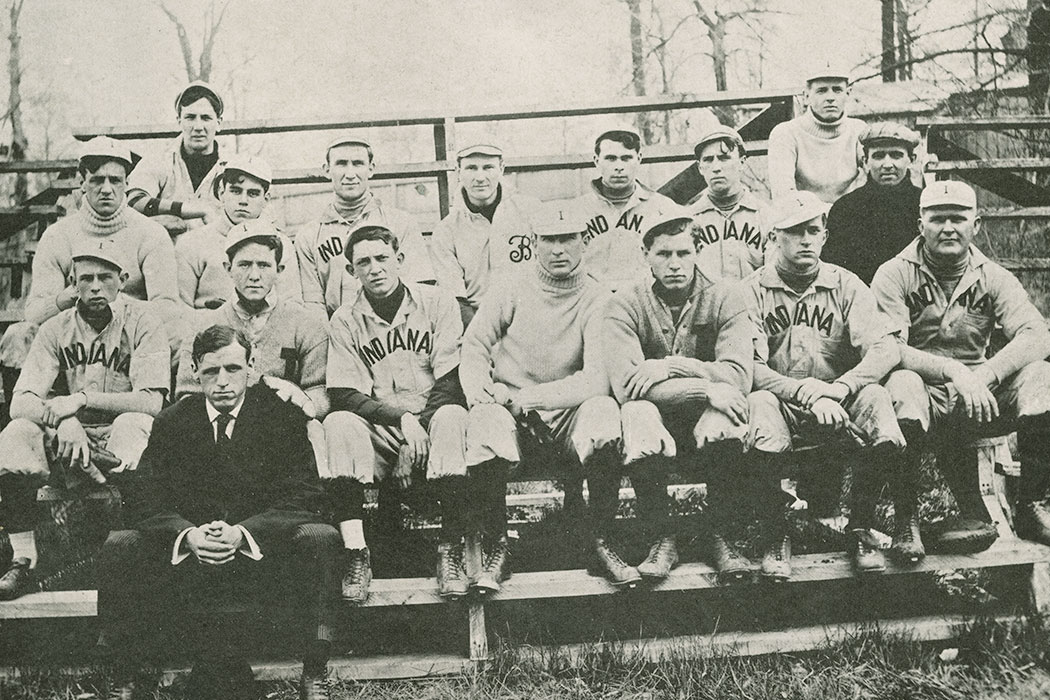The Early IU Nurses of WWI

Rhuie D. Caster graduated from the IU School of Nursing on June 12, 1918. Five days later, she joined the Army Nurse Corps and served for 13 months.
World War I was the first time that women officially served in the military in large numbers. Twenty-nine IU women served in the U.S. military during the war, and many more served in the Red Cross, Y.M.C.A, and other official support units. Fifteen served in the Army Nurse Corps. Of the 15 graduates of the nursing program in its first two years—1917 and 1918—eight would go on to serve in World War I.
One of those nurses, Flora Ruth, became IU’s first woman to die while in military service. Originally from Indianapolis, she graduated from IU in 1915, where she was a member of the Delta Zeta sorority. She then enrolled in the IU nursing program and graduated in 1918. Eight months later, while working at Camp Pike in Arkansas, she died from a burst appendix. Her photo was prominently featured in publications about IU students who died during the war.
Josephine Amada Grima was born in Matamoros, Mexico. A few months after turning 18, she headed north. After taking a ferry over to Brownsville, Texas, she made her way to Indianapolis and enrolled in IU’s three-year nursing program. At 22, Grima was in the first class of nursing graduates in 1917. Her 4-foot-11-inch stature made her easy to spot in photos. The following March, Grima went to the Marion County Circuit Court and declared her intent to stay in the United States by swearing before them that she was not anarchist or polygamist (the two types of immigrants prohibited by law). Days later, she enlisted in the Army Nurse Corps. During her 19 months, the Army sent her to the Army hospital in Markleton, Pa., and then to Camp Devens, Mass. Camp Devens had become a primary facility for both pneumonia and Spanish Influenza cases, and admitted over 15,000 patients.
Another of IU’s pioneer nurses was Lettie Iva Wadsworth. She was born southwest of Bloomington, Ind., in the small town of Raglesville in 1882. After graduating from high school in 1897 with nine other students, information about her is scarce until 1910 when she went to Chicago to enter a nursing training program. Afterward, she briefly worked as a nurse in Chicago before joining a Red Cross unit headed for Europe in 1915. The unit was part of the British Expeditionary Force. Wadsworth spent most of her 10-month deployment taking care of French soldiers in a Paris hospital. Then in the fall of 1916, at age 34, she enrolled at IU.
As the United States entry into the war became inevitable, Wadsworth found it hard to focus on her studies. She wrote “… the realization that our own American boys, our IU students, were about to lay down their lives as our toll in this awful struggle came upon me in full force and I guess I rather went to pieces over it. I know my grade suffered noticeably.” So Wadsworth withdrew from IU and signed up with the American Expeditionary Force.
“To me, it is as though a great magnet were drawing me back to a work which I should not have left at all. I could no more keep from going … than water could keep from flowing downhill.” Wadsworth said. This time, she spent 15 months in service and was in a field hospital near the front lines.
When Wadsworth’s enlistment was over, she quickly returned to IU—making her the first known woman veteran to attend IU. As small waves of influenza still swept the country from time to time, IU called her into service as a campus nurse. In 1922, at age 40, she earned her bachelor’s degree in English.
These pioneering women would show that IU’s woman students and alumnae were as able and willing to serve their country as their male counterparts. In 1922, IU launched a fundraising program known as the Memorial Campaign to secure funding for much-needed campus facilities. The military service of IU women helped garner support for the Memorial Campaign for the building of a women’s residence hall. In 1925, in recognition of their service, the women’s dormitory, Memorial Hall, became the first monument to women service members in Indiana and one of the first in the country.
This article originally appeared in the April 2020 issue of 200: The IU Bicentennial Magazine, a special six-issue magazine that highlights Bicentennial activities and shares untold stories from the dynamic history of Indiana University. Visit 200.iu.edu for more Bicentennial information.
Tags from the story
Written By
John Summerlot
John is the director of IU’s Center for Veteran and Military Students, and a contributor to 200: The IU Bicentennial Magazine.



